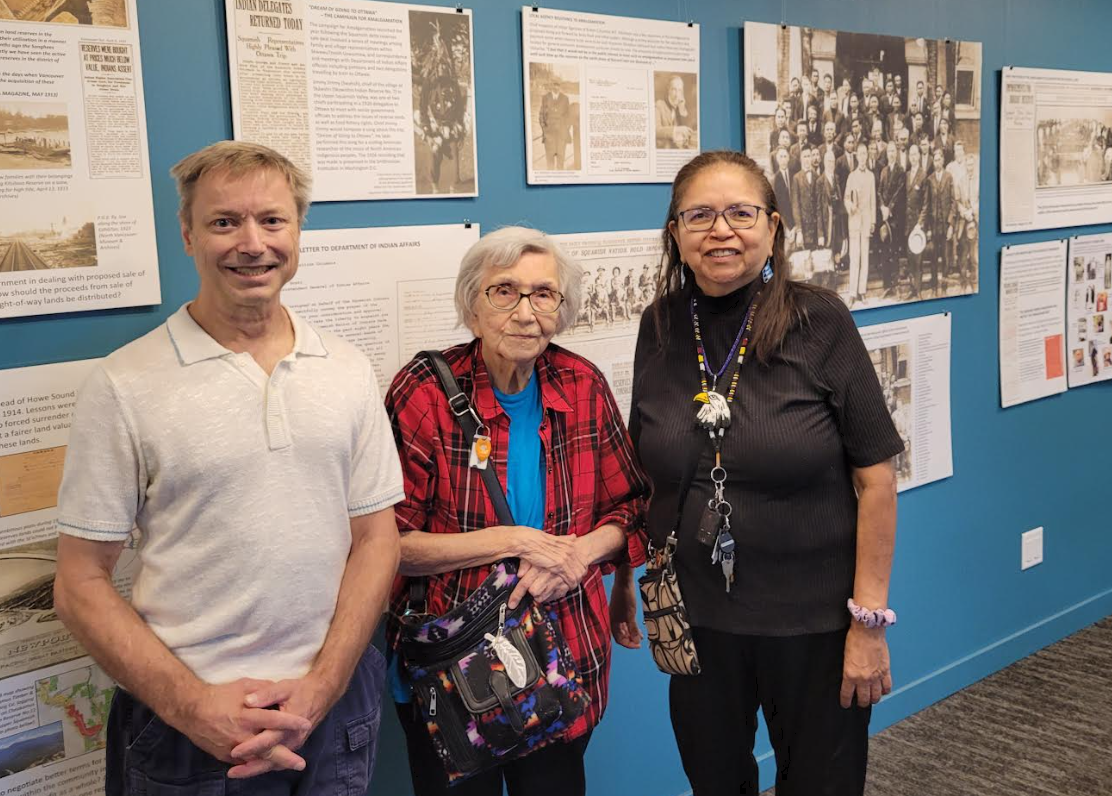
This summer, the Squamish Nation is celebrating 100 year anniversary of amalgamation and the District of Squamish and the local library is holding an exhibition on the historic event.
On July 23, 1923, after years of discussion and advocacy, the Siyàm – heads of families (chiefs) – of SḴWX̱WÚ7MESH ÚXWUMIXW presented a petition for amalgamation as a single “SQUAMISH NATION” under one governing council administering tribal ownership of reserves and consolidated tribal funds. These demands were agreed to by the federal Department of Indian Affairs.
An exhibit hosted by the District of Squamish and Squamish Public Library offers some background information and illustration for interpretation of the story of the Squamish Nation Amalgamation as an ongoing story of Self-Determination, Reconciliation and of local collaboration among neighbours and friends.
In a press release, exhibit curators Eric Andersen and Tsawaysia Spukwus (Alice Guss) said they saw an opportunity to emphasize local perspectives and local library and other archive materials and information not seen before. A committee of local Squamish Nation Elders has advised on the selections. Indian Reserves, as established in the territory of Sḵwx̱wú7mesh Úxwumixw under the Indian Act, are at the centre of the story of the 1923 Amalgamation initiative.
Urbanization, railway and port development at the beginning of the last century were creating encroachment pressures on reserves, and governance issues for the Sḵwx̱wú7mesh people. The exhibit at Squamish Public Library charts how these pressures evolved and how the Sḵwx̱wú7mesh leaders’ strategy and advocacy evolved to meet these pressures, culminating in the 1923 petition.
“Sḵwx̱wú7mesh Úxwumixw”, the collective of the Squamish people and their villages, after 1923 had a recognized, unified, single governing council. This was immediately to become an important advocacy platform regarding Aboriginal Rights and Title.
While the Squamish Nation had its governing council in 1923, the townsite of Squamish remained unorganized until 1948. Amalgamation with Brackendale and the Mamquam area did not take place until 1964. The exhibit features examples of government-to-government and community collaborations over the past several decades in education, health care, library and recreation facilities and programming, land use planning, forestry businesses, and community celebrations and events.
The exhibit “Celebrating the 100th Anniversary of the Squamish Nation Amalgamation” can be seen at the Squamish Public Library until mid-August.




